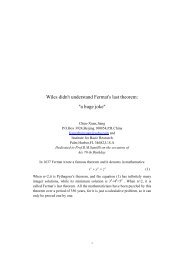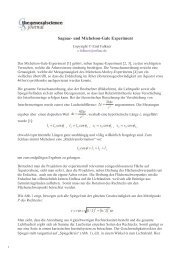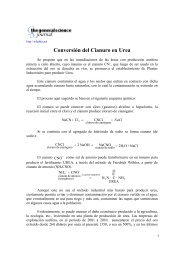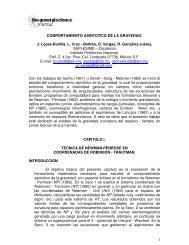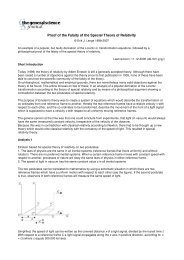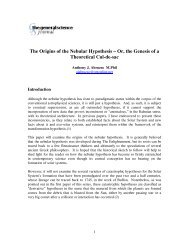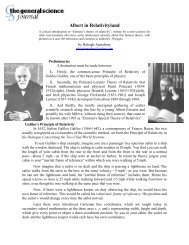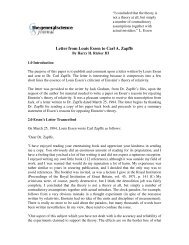MAGNETISM DURING THE SEVENTEENTH CENTURY HH Ricker III
MAGNETISM DURING THE SEVENTEENTH CENTURY HH Ricker III
MAGNETISM DURING THE SEVENTEENTH CENTURY HH Ricker III
You also want an ePaper? Increase the reach of your titles
YUMPU automatically turns print PDFs into web optimized ePapers that Google loves.
successive corpuscles will unite. and thus by and by the corpuscles of loadstone scattered<br />
throughout the body...will orient themselves. In this way as the body...acquires Northern and<br />
Southern poles it is magnetized. However, were the loadstone removed, because of the<br />
propensity {to be easily moved], or because of some other cause, those corpuscles return to<br />
confusion and disorder hence the virtue is lost.”<br />
The decreasing strength of the magnetization with distance is explained by a diminution of virtue<br />
with distance as follows<br />
“... as the corpuscles which are nearer to the loadstone become oriented, it must be that<br />
the power goes on decreasing by and by the farther away the corpuscles are from the loadstone<br />
until it finally vanishes completely.”<br />
The payoff is the ability to explain why the magnetic virtue is able to act at a distance. The<br />
explanation reminds us of the propagation of an occult quality. Castelli tells us that<br />
magnetization can occur without direct contact by making the medium an active agent capable of<br />
magnetization as a body of the second kind. Hence the air for Castelli is a magnetic substance<br />
capable of magnetization to the second degree. It is a beautiful theory, but its similarity to the<br />
Aristotelian idea of a secondary occult quality probably doomed it. These ideas were clearly out<br />
of favor by the time that Castelli composed his Discorso. This explains why he felt that the<br />
theory was incomplete and that more time was needed to work upon it.<br />
Although Castelli’s Discocso was not published, it is certain that it was circulated and read by<br />
members of the Galileo circle in Italy. Castelli was an important member of that community. He<br />
had assisted in Galileo’s study of sunspots. In 1667, Giovanni Alfonso Borelli, a student of<br />
Castelli’s, published a treatise on mechanics, De vi percussionis, which presented a brief<br />
discussion of magnetism. This discussion is believed to be a modified version of Castelli’s<br />
theory. The main modification introduced by Borelli, is the introduction of a magnetic effluvia or<br />
vapor from the loadstone to replace Castelli’s propagation of magnetism through the air. Borelli<br />
explains magnetization of iron by supposing that<br />
“..one must postulate that in the iron there are innumerable active and spirited particles.<br />
These particles, however, are disposed in a very confused manner, all intertwined in a variety of<br />
ways so that not all their Northern poles point in the same direction but are all confusedly<br />
mixed...it is necessary to imagine that when the iron is brought near the loadstone and within its<br />
sphere, which stems from the exhalation of the vapor of the loadstone, just as by the process of<br />
stirring up, the magnetic particles which are within the interstices of the iron are stirred up and<br />
turned, and once loosened and set free...they direct their poles in proper orientation toward the<br />
pole of the loadstone...”<br />
This is not Castelli’s theory, but we see that Borelli has borrowed Castelli’s ideas and combined<br />
them with the currently prevailing magnetic theories. The ironic aspect is that for the modern<br />
reader, Castelli’s theory has more of the ring of truth to it than the improvement offered by<br />
Borelli.<br />
The Aristotelian Reaction to Materialism



